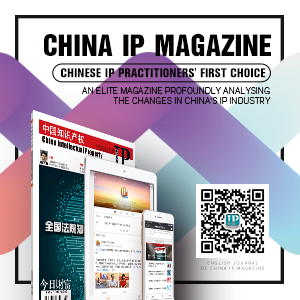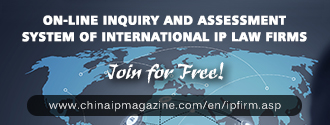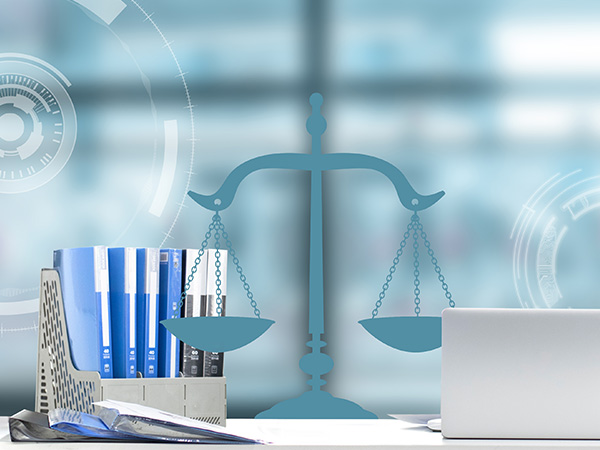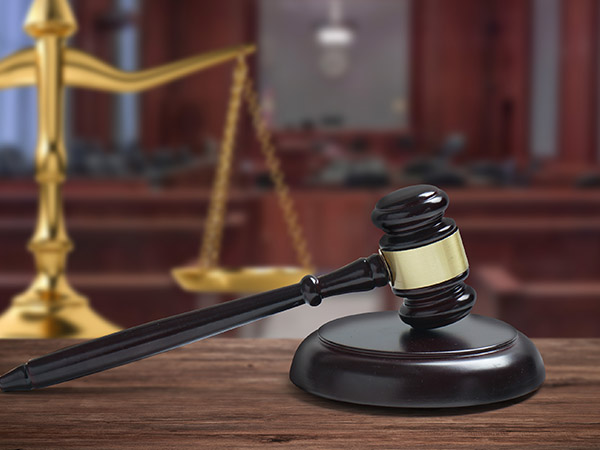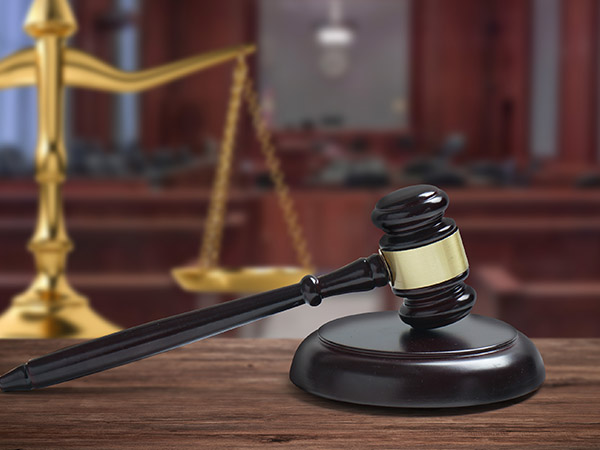Resolving the Compensation Issue in IP Infringement Judicial Practice
Chen Huizhen
Shanghai Intellectual Property Court
Since it was established, regarding the difficulties incurred by litigators in receiving their compensation for intellectual property infringement, Shanghai Intellectual Property Court has actively and strictly implemented the judicial policies to protect intellectual property, carefully studied the causes to these difficulties, and steadily and effectively used litigation holds. It has provided strong support to the solution of the issue by considering the seriousness of the fault of the infringer, in combination with the rules on hindrances to evidence admission and on statutory compensation. It has thus strengthened the protection of intellectual property rights.
In intellectual property infringement cases, compensation has been one of the issues mostly complained about by litigators in judicial practice. There have been many reasons for this issue. Ever since it was established, Shanghai Intellectual Property Court ( SIPC) has actively and strictly implemented judicial policies to protect intellectual property, carefully studied the causes of the compensation issue, and steadily and effectively used litigation holds. It has provided strong support to the solution of the compensation issue, considering the degree of fault of the part of the infringer, in combination with the rules on hindrance to evidence admission and on statutory compensation. It has thus strengthened the protection of intellectual property rights.
I. Cause analysis of the compensation issue
The compensation issue is an objective phenomenon resulting from a number of causes. For example, upon any of his right being infringed, the proprietor of intellectual property may receive less-than-expected remedies from the court, therefore his loss cannot be offset or made good. In terms of the cost of the proceedings, it is often not worthwhile for him to bring the dispute to the court. In areas where the value of some rights has a short life cycle, lawsuits often lead to losing the market. As the intellectual property litigation is highly professional, it would require much input from the litigators, and the above-mentioned actual results obviously cannot satisfy the rights holders. The first reason is the particularity of intellectual property. As intellectual property is intangible, it becomes difficult to evaluate its loss. As the infringing act is hidden, the infringement is hard to prove. Moreover, there have been a few subjective factors. For example, the proprietor maybe incapable of pursuing the litigation or of using relevant procedures and systems. Certainly the court may also be a factor, as due to objective or subjective limitations, it is unable to give high-level protection to intellectual property.
If we go even further, four causes can be concluded that lead to the compensation issue. The first cause is the difficulty to prove the infringement. It is also one of the most direct causes that makes it so hard for the proprietor to get the result he desires. It is embodied in the difficulties for the proprietor to prove the infringing act and the scale and severity. The second is the difficulty to receive compensation fr om the infringer. There are some companies that are used to infringing others. They maneuver to escape their liabilities by evacuating the financial resources of their companies through capital operations or backdoors of their actual controllers, and by taking advantage of the long-term litigation process. The third is the difficulty to stop infringement immediately. As intellectual property infringement is difficult to prove and qualify, it leads to a long period of proceedings, and the long period of intellectual property lawsuits has led to "winning the lawsuit and losing the market" to a certain extent. The fourth reason is the high expectation of the proprietor. He calls out to the court that the rules on evidence admission hindrance and on punitive damages should be applied, but he fails to grasp the entire picture on the application of these rules. As his claim cannot be satisfied, he may feel disappointed and complain about how difficult it is to be compensated.
II. Exploring into solutions
What the proprietor tries to pursue is the ultimate result, i.e. to what extent the court would support his claim and to what extent the support could be realized in the end. In this sense, the compensation issue can be solved directly by increasing the ratio of court support and that of support realization. To this end, SIPC has explored the issue in the following aspects.
First preservation in litigation should be actively and steadily used as a procedural guarantee of intellectual property protection. The preservation in litigation is uniquely significant to protect intellectual property and of paramount importance in the proceedings. For this sake, in China, the behavior preservation and pre-lawsuit evidence preservation system were originally established in intellectual property proceedings. SIPC attaches great importance to protecting the procedural rights of the parties, and steadily and actively takes litigation holds according to law. From January 1, 2015 to October 31, 2017, it had ruled in favor of the parties' applying for preservation in litigation in 330 cases (including 71 litigation holds for pre-lawsuit evidence), 73.3% of which were for intellectual property infringement.
Evidence preservation helps to obtain the evidence on the act and scale of the infringement of the infringer according to law, thereby further identifying the infringement facts and determining liability for infringement. In the computer software copyright infringement dispute initiated by Autodesk et al, on the basis of the pre-lawsuit evidence, the parties clarified the basic facts including the software version and the number of copies of the infringing software. From that, the judge started to mediate and finally the parties reached a settlement agreement of "Compensation + Softw are Legalization" at the price of 5.8 million Yuan.
To a certain extent, property preservation blocks the path for the infringer to conceal his property. It also helps with the settlement of the dispute and the fulfillment of liabilities. In the computer software copyright dispute initiated by Mexxen Technology (Shanghai) Inc., upon the request of the plaintiff, SIPC fully utilized the functions of the online enforcement of the inspection and control system, and conducted a full security guarantee of 8.5 million yuan for the plaintiff's property preservation application. On this basis, the mediation went on smoothly, and the complaint was withdrawn by the plaintiff.
Behavioral preservation is a brake to stop the harmful consequences from spreading and any threatening infringement. For example, believing t h at Mr. Cai , a f o rmer seni o r management member, had copied a number of documents that contained its technical information before he resigned and was now ready to leave China, Data Yes applied to SIPC for a pre-lawsuit behavioral preservation order. After reviewing the application according to law, the court promptly ruled to give the pre-lawsuit behavioral preservation order and then served the civil ruling on Mr. Cai in the evening who then lived in a hotel and was ready to go abroad. In the subsequent infringement action raised by Data Yes, the parties reached consensus on the disposition of the documents held by Mr. Cai. The case was successfully settled finally.
Secondly, the essential elements of the intellectual property trial are utilized to enlighten the litigators according to law, and standardize and guide the parties to submit sufficient evidence. The litigation of intellectual property is highly professional, involving a good many essential elements and facts and the parties being antagonistic towards each other. When starting a lawsuit, the proprietor tends to focus their efforts on proving the existence of the act, whether the act is infringing and what kind of infringement it constitutes, while often ignoring the proof of facts relating to the compensation. SIPC sorts out and formulates guidelines for similar cases and establishes the practice for judges to hear cases according to the essential facts, in order to guide the proprietor to submit and cross-examine evidence according to law. For example, in a design patent infringement dispute heard by SIPC, the plaintiff claimed that the defendant had infringed upon his right and should be held liable for damages. However, when raising the action, he failed to submit the calculation of and evidence on the loss incurred by him. After he was enlightened by the judge of the essential elements in the trial, he requested the court to issue an investigation order, with which he could ask taobao.com to provide the figure of infringing goods sold through the website. Then the court found that the scale of infringement was sufficient to prove that the profit of the defendant was more than the amount claimed by the plaintiff. Therefore, the plaintiff's claim for compensation was fully affirmed by the court.
Thirdly, the legal representative and other major shareholders that engage in operating the infringing company are deemed joint infringers according to their subjective fault, who assume the liability for the infringement of the company jointly and severally with their personal assets. In the case of a large-scale operation of infringement, legal representatives or other majors ha r e hold e r s dominate their companies. They may register several companies in order to cover up and escape from infringement liability. In this regard, SIPC holds that it is quite obvious that the direct doer of the infringement, who controls the behavior of the company, contains the intention to use the company as a cover for his infringement of the intellectual property. He should assume the joint and several liabilities for his joint infringement with the company as a legal person. However, if the liability of the doer is investigated only to reveal the company , it undoubtedly increases the proprietor's burden of proof and the cost of litigation. For example, in Hugo Boss Trade Mark Management GmbH & Co. KG v.Tang et al. for trademark right infringement and false advertising, Tang and his wife had successively registered four or five companies collectively or individually. The names of these companies contained the elements that tried to connect with Germany or Europe, as well as some elements in the company name of the plaintiff. After being transferred a trademark that had been registered a few years ago and included the main elements of the plaintiff's trademark, they conducted a series of so-called licensed activities, engaging in operations that manufactured and sold goods that did not employ their own trademarks in the normal way, but tried to connect with the goods that used the trademark of the plaintiff. The production and sale were in a large scale, and the operations were directly conducted and controlled by Tang and his wife. After hearing the case, SIPC held Tang and his wife set up several companies and launched a series of infringing activities to form a joint infringement with the companies and should jointly take joint responsibility for civil infringement.
Also, upon the request of the plaintiff, the court sealed up and froze two residences under Tang's name. In the first instance, the court decided that the defendant should compensate the plaintiff for losses of 4.92 million yuan while assuming the civil liabilities such as stopping the infringement.
Fourthly, in determining the infringement liability, the amount of compensation is decided depending on different circumstances. In judicial practice, very few cases of intellectual property rights infringement that can identify the specific amount of the loss of the plaintiff or the profit of the defendant. Mostly, the compensation i s determined by the court discretionally by applying statutory compensation. When determining on compensation, SIPC differentiate its decisions between different situations to show the focal points of protection or crackdown.
(1)The amount of compensation is determined to be within or above the maximum amount of statutory compensation, by applying the rules on obstruction of evidence admission and on statutory compensation, considering the circumstance of infringement and the evidence on record. If the trademark infringed is well-known, the infringement has existed for a long period of time, and/or the infringer contains obvious malice, then despite the lack of any exact evidence on how to calculate the loss, the compensation may be determined to be the maximum of the statutory compensation in light of these factors and that the defendant refuses to provide evidence on how much he has profited from the infringement. For example, in the two trademark infringement cases involving BMW and RT-Mart, SIPC made a judgement of 3 million Yuan in compensation. In cases where certain absolute facts can be found, but the exact figures for loss calculation cannot be decided, if there are some factual elements that reflect the seriousness of the infringement, the compensation may be decided to be more than the maximum of the statutory compensation, considering the circumstance of the case and the fact that the defendant refuses to provide any evidence on his gains of the infringement. For example, in the computer software copyright infringement dispute initiated by SAP GmbH, the collegiate bench inferred the number of the software copies made by the defendant from the amount of the training fee that he received. They concluded that the damage sustained by the plaintiff had exceeded 500,000 Yuan. Therefore, they used their discretion to decide the compensation to be 1.18 million Yuan. In the case involving infringement upon the patent for industrial sewing machines filed by Brother Industries, Ltd., the evidence shew that the defendant's profit due to infringement was m uch higher than the legal maximum compensation 1 million Yuan. Therefore, considering the contribution rate of the patents involved in product profits and other circumstances of the case, the defendant's compensation for the plaintiff's compensation was 5.5 million Yuan.
(2)The amount of compensation is determined according to different types of infringement, fighting against source infringement and repeated infringement. For example, in the trademark infringement case appealed by Honeywell International Inc., the court of first instance failed to notice that the defendant was a counterfeit goods producer, and merely judged a compensation of 80,000 Yuan. As the court of second instance, SIPC ruled that the defendant was the source of infringement and should assume heavier liability. Therefore, the amount of compensation was substantially increased, on the basis
of the facts and the infringement scale found. In another two cases respectively appealed by Chanel (France) S.A. and Kanatsu Co, Ltd., two appellees were repetitive infringers, which the courts of first- instance failed to discover. This led to the disagreements of the plaintiffs. For this sake, in the trials of second instance, SIPC revoked the original judgments and substantially increased the compensation in the new judgments.
Safeguard rights holders' right to appeal and fully support reasonable expenses. The compensation for infringement damages and the reasonable expenses for investigating and stopping infringement are different kinds of losses from different causes. The reasonable expenses incurred by the proprietor to maintain his legal rights are an extra expenditure that aggravates the already serious situation of the proprietor from intellectual property infringement. Increasing the amount of compensation to include the reasonable expenses of the proprietor is conducive to encouraging the proprietor to actively maintain his rights, and safeguarding the normal order in the market economy and intellectual property management. In cases w her e the in fr in gin g facts and the reasonable expenses are found, SIPC tries to lift the amount of compensation so that the compensation becomes consistent with the market price of the intellectual property services. In the aforementioned two cases filed by Hugo Boss Trade Mark Management GmbH & Co. KG and Brother Industries, Ltd., the court fully affirmed the reasonable expenses that had been found, which amounted to 420,000 Yuan and 500,000 Yuan respectively. Moreover, in cases where the defendant is the infringer, even if the defense of exemption for sold goods is established, then except for any special reason, the defendant should not be naturally exempted from making compensation for the plaintiff's reasonable expenses.



